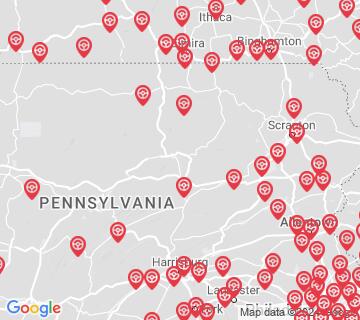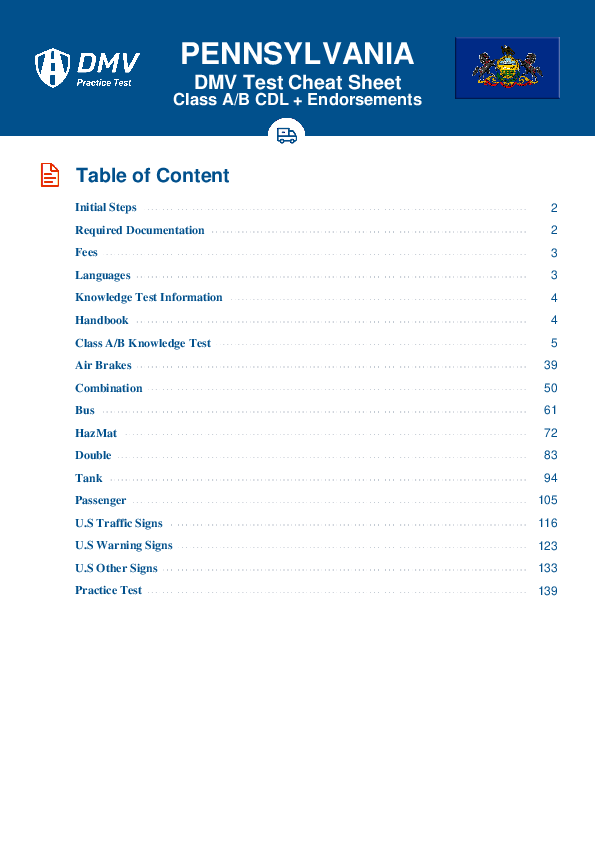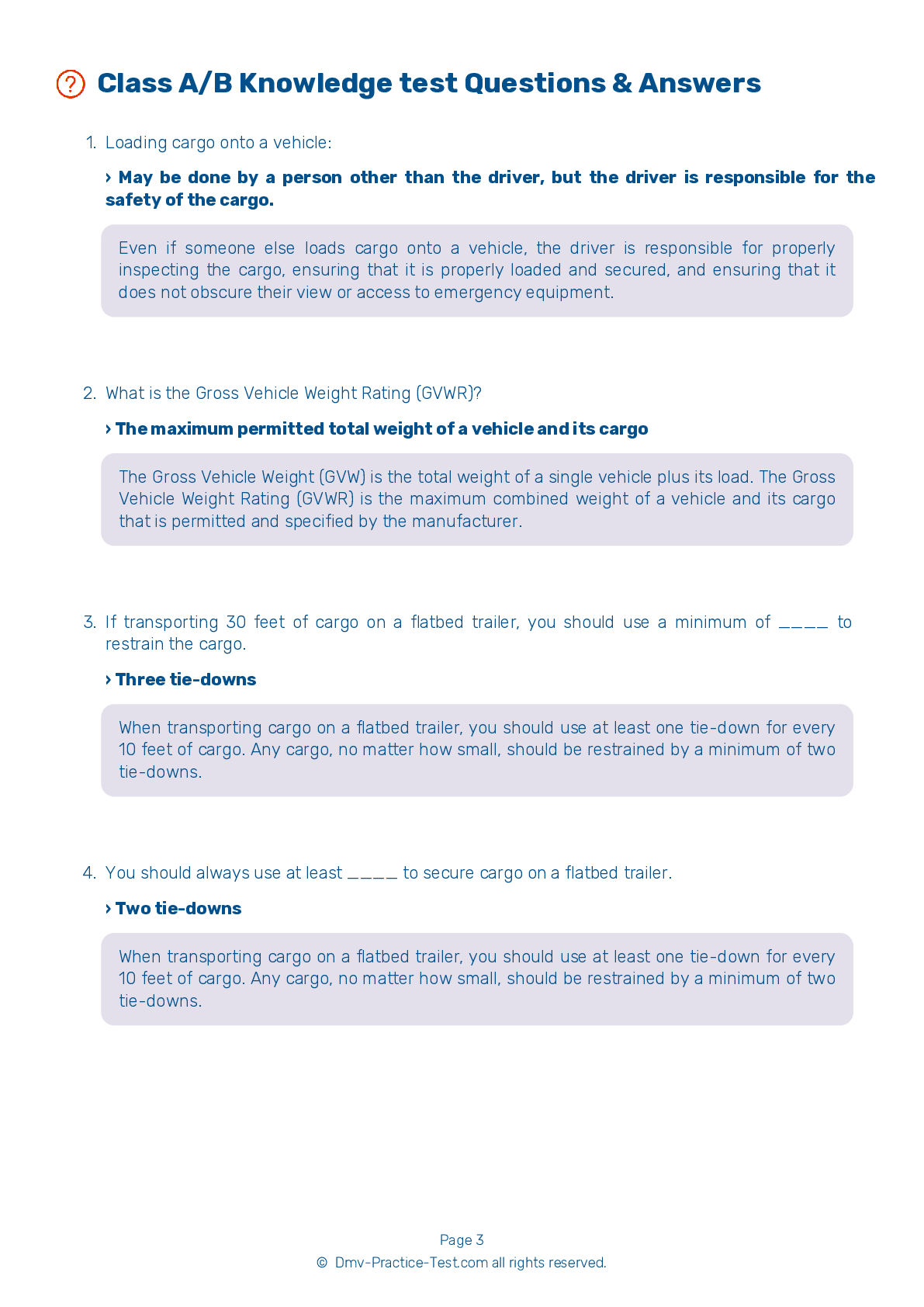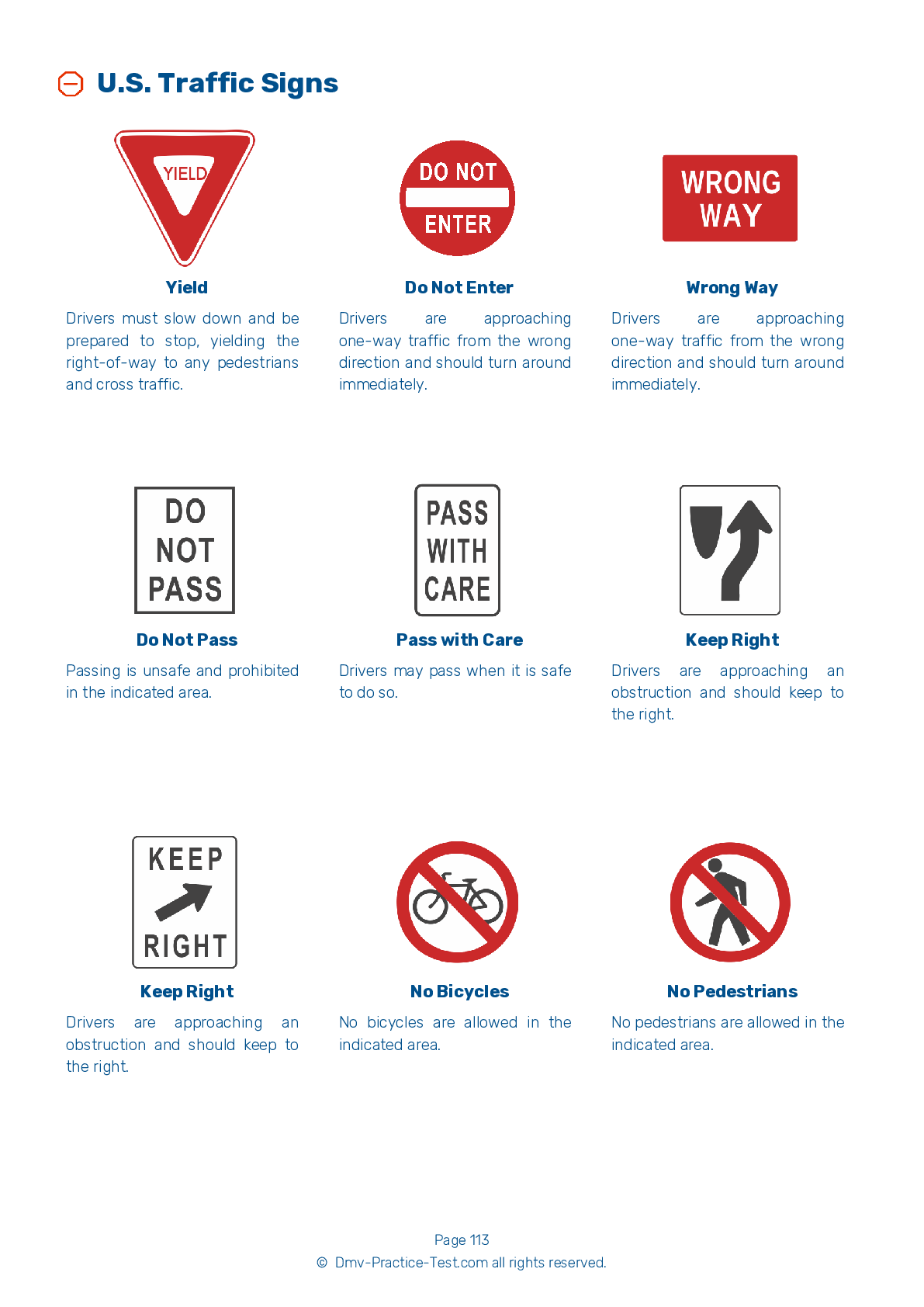Air Brakes #1
Air Brakes Endorsement Test | Pennsylvania 2025 #1 Page 4 of 4
Train for FREE online with our Pennsylvania CDL air brake test. The official exam test consists of several obligatory parts, with all of them checking your knowledge of different blocks of road rules. If you need to obtain a PA Class A/Class B driver license in 2025, practice as much as possible. Free sample tests published on our website will help you check and improve your knowledge and boost your grades. Please bear in mind that the requirements for CDL may vary from state to state.
25
20
20
19 . To stop in a vehicle that uses air brakes, the driver should:
Pull the brake pedal up.
To make a normal stop in a vehicle with air brakes, push the brake pedal down. The harder the pedal is pressed, the more air pressure is released.
20 . If braking at a speed of 55 mph while driving on dry pavement, the brake lag can add ____ to your vehicle's total stopping distance.
10 feet
The total stopping distance for vehicles equipped with air brakes is made up of four factors: perception distance, reaction distance, brake lag distance, and braking distance. When braking at a speed of 55 mph while driving on dry pavement, the brake lag can add around 32 feet to a vehicle's total stopping distance.
21 . The air storage tanks:
Hold enough air for more than 1,000 braking cycles.
In an air brake system, the air storage tanks hold enough air for brakes to be used several times if the compressor stops working.
22 . Vehicles with dual air brake systems:
Do not need time to build air pressure before a trip.
Before driving a vehicle with a dual air brake system, you must allow the air compressor time to build up at least 100 psi of air pressure in both the primary and secondary systems.
23 . Brake fading is caused when:
Brakes are wet.
Using the brakes excessively will cause them to overheat, making them less effective. This is referred to as "fading."
24 . Where is the safety relief valve usually located?
On the dashboard
An air brake system's safety relief valve is located in the tank that is first to receive air from the compressor.
25 . Failing to drain the tanks in an air brake system can result in:
Too much fuel being carried.




